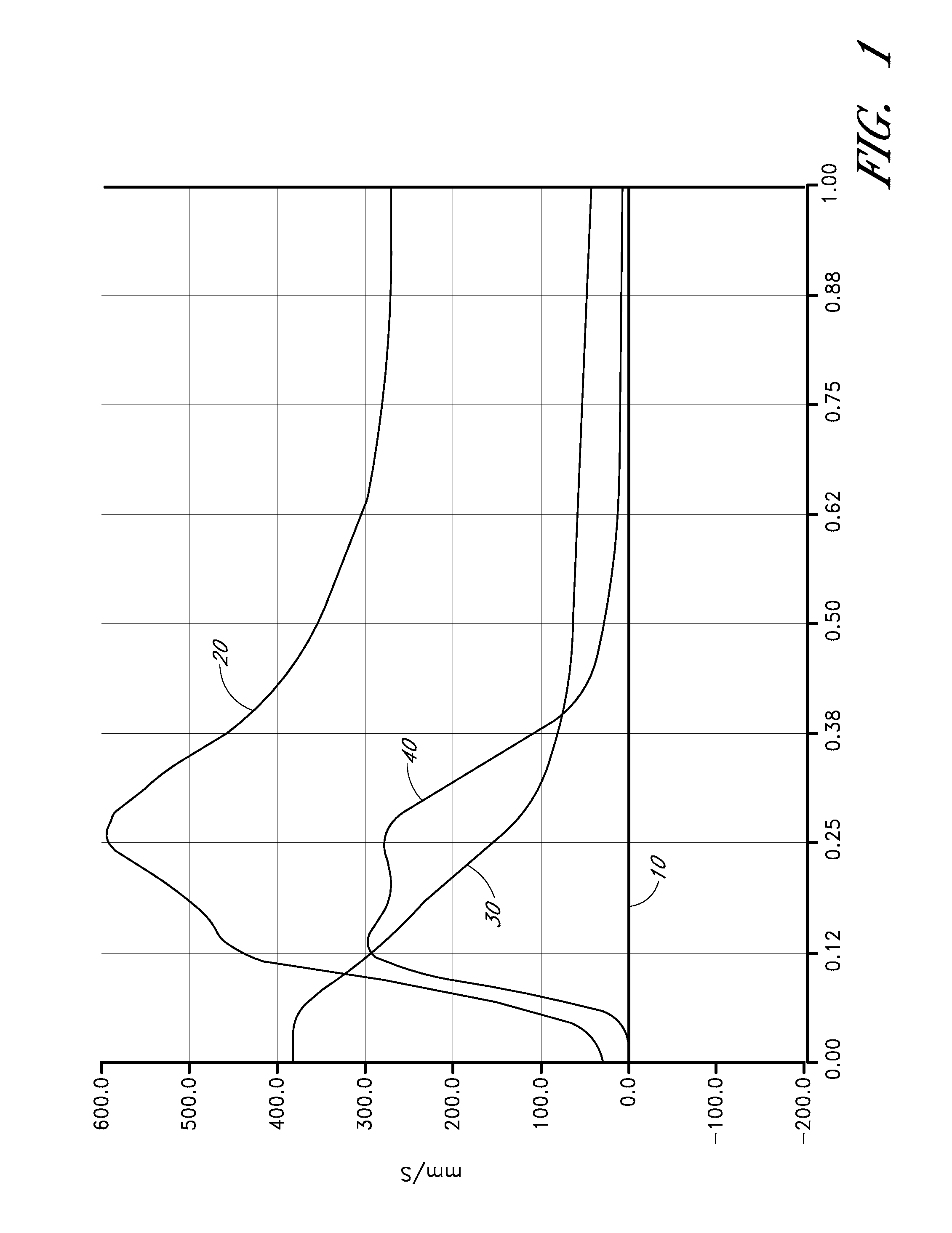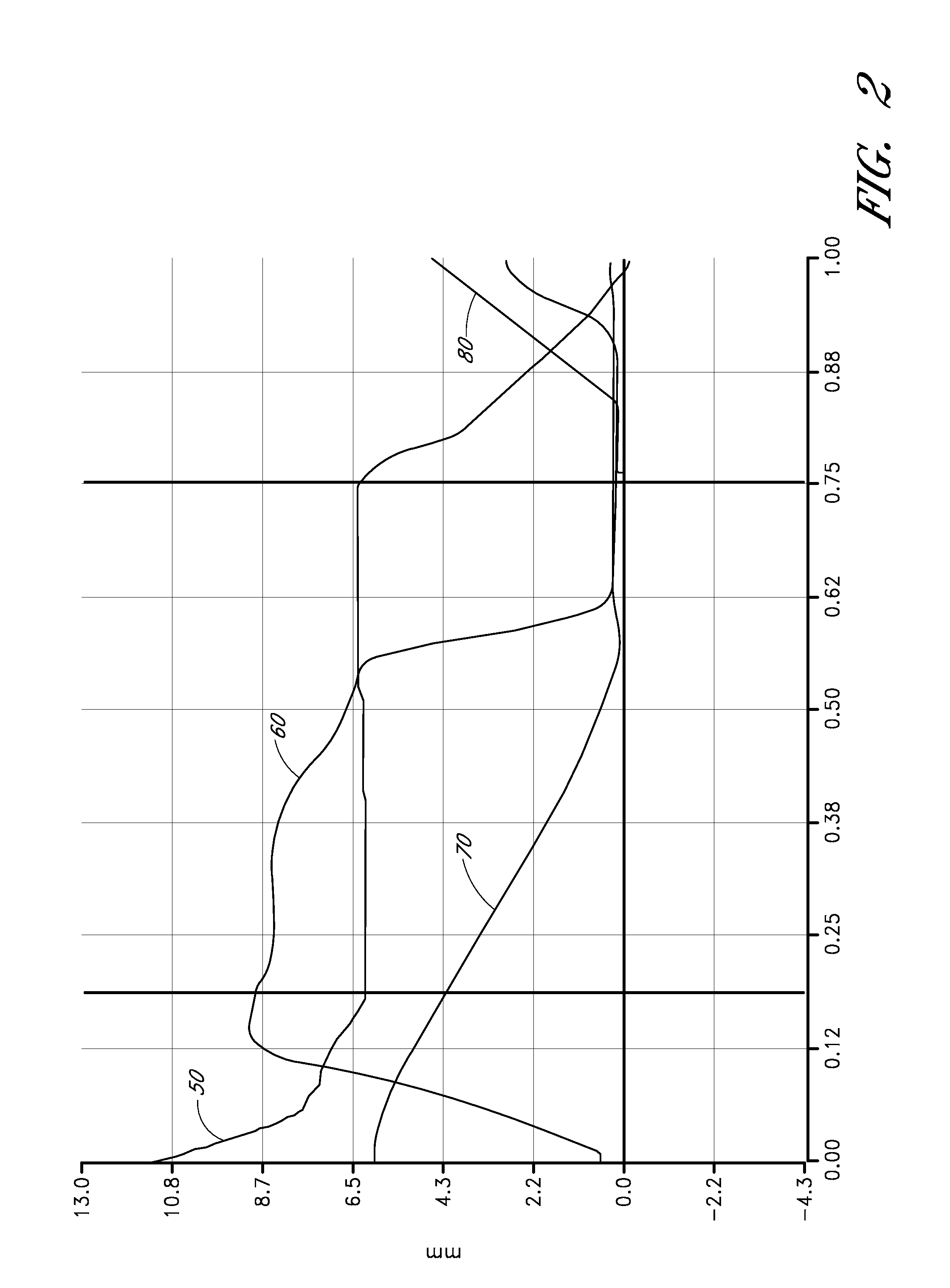Injection molding
- Summary
- Abstract
- Description
- Claims
- Application Information
AI Technical Summary
Benefits of technology
Problems solved by technology
Method used
Image
Examples
Embodiment Construction
[0021]FIG. 1 is a graph showing the variation in time (measured along the x-axis in seconds) of four parameters during a conventional injection molding process. Specifically, the graph shows variation in mold part separation (line 10), injection pressure (line 20), injection screw displacement (line 30), and injection screw speed (line 40).
[0022]As this is a conventional injection molding process, in which molten plastic material is injected into a closed mold, the mold part separation (line 10) is 0 at all times during the process.
[0023]As the process starts, injection pressure (line 20) starts to increase. This leads to motion of the injection screw, shown by a decreasing injection screw displacement in line 30 and an increasing screw speed in line 40 at around 0.05 seconds. As the mold cavity fills with injected molten plastics material, the pressure rises, and the screw continues to move forward and accelerates in order to overcome this pressure.
[0024]When the mold cavity is nea...
PUM
| Property | Measurement | Unit |
|---|---|---|
| Time | aaaaa | aaaaa |
| Time | aaaaa | aaaaa |
Abstract
Description
Claims
Application Information
 Login to View More
Login to View More - R&D
- Intellectual Property
- Life Sciences
- Materials
- Tech Scout
- Unparalleled Data Quality
- Higher Quality Content
- 60% Fewer Hallucinations
Browse by: Latest US Patents, China's latest patents, Technical Efficacy Thesaurus, Application Domain, Technology Topic, Popular Technical Reports.
© 2025 PatSnap. All rights reserved.Legal|Privacy policy|Modern Slavery Act Transparency Statement|Sitemap|About US| Contact US: help@patsnap.com


